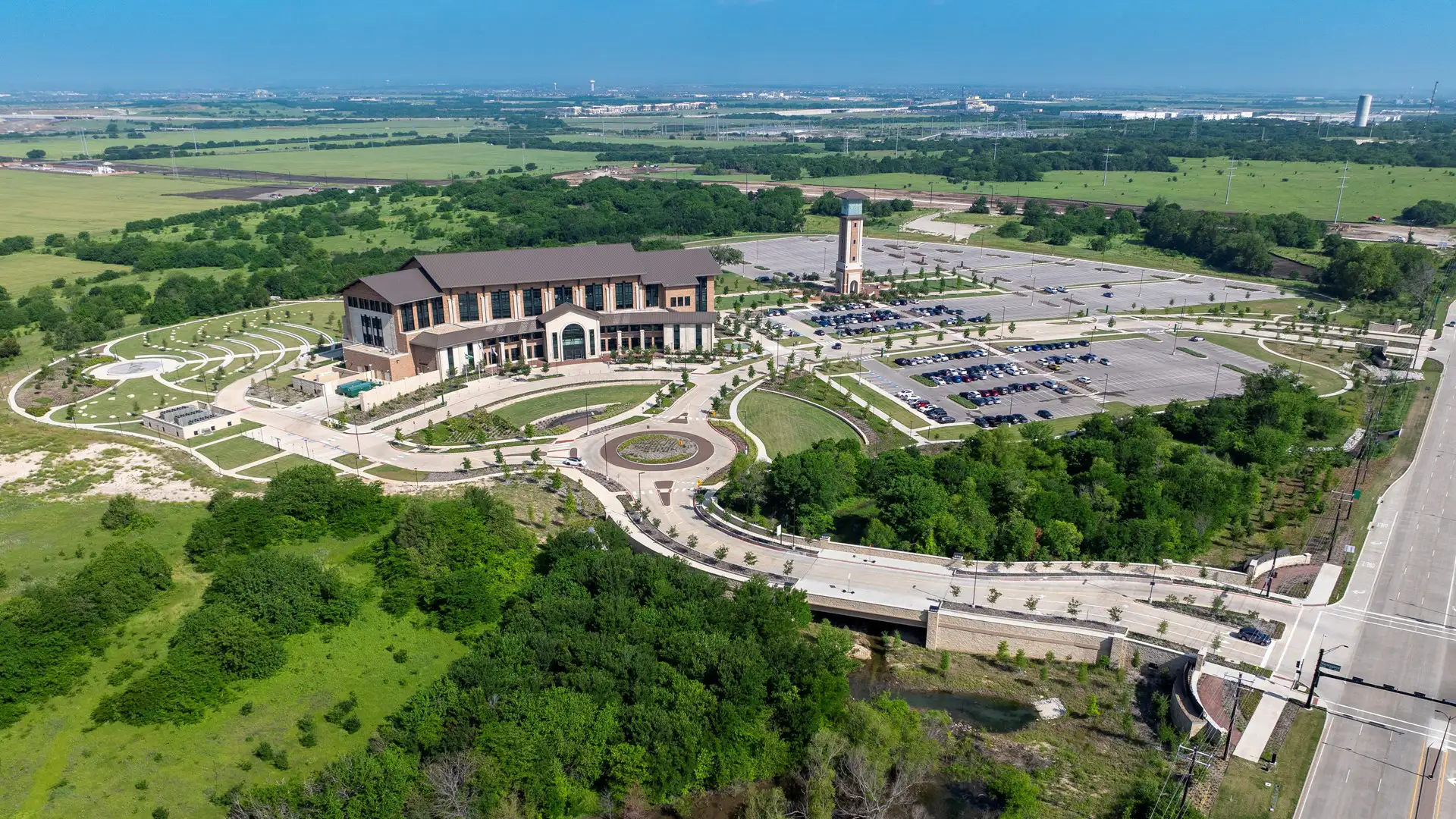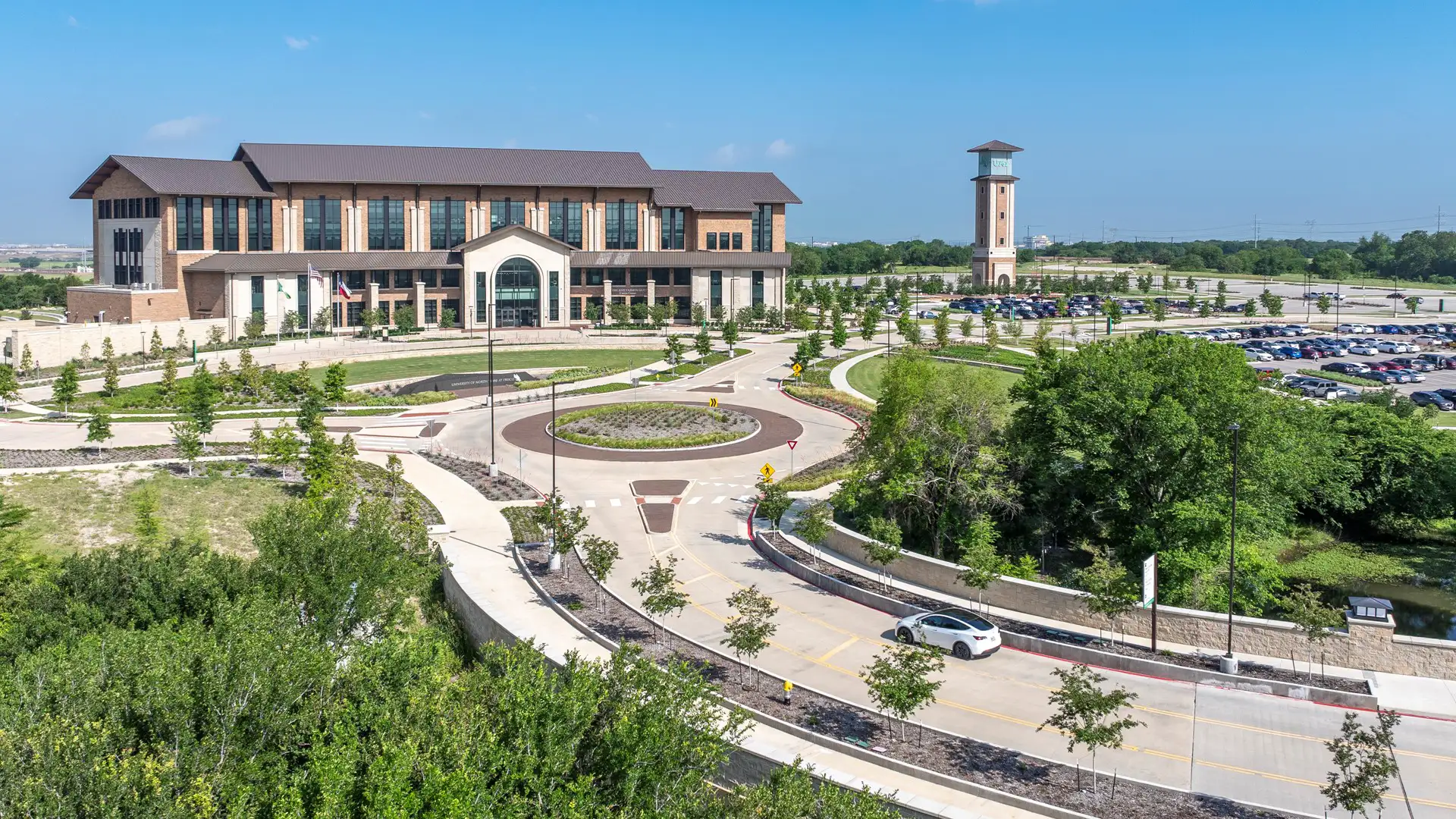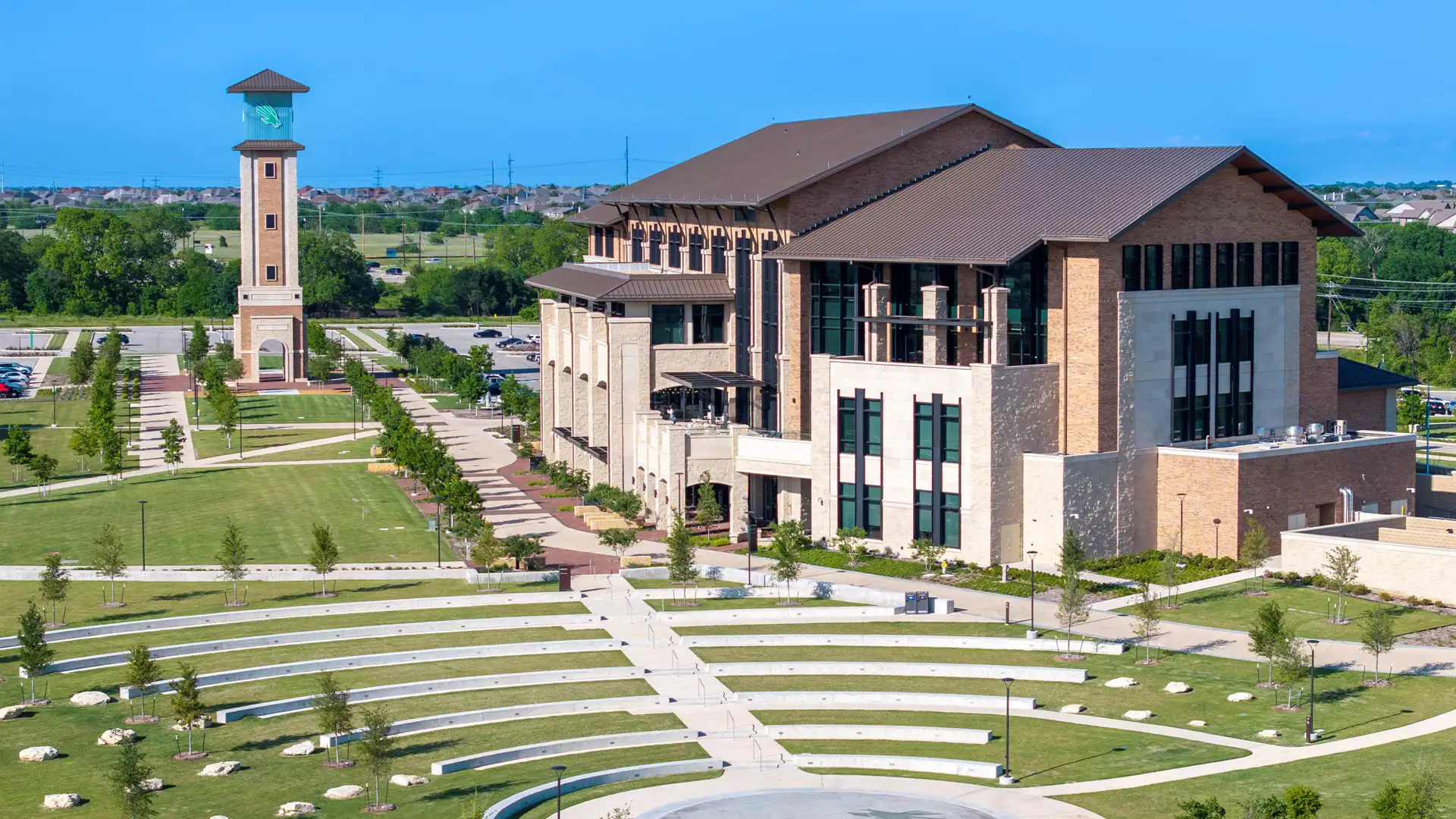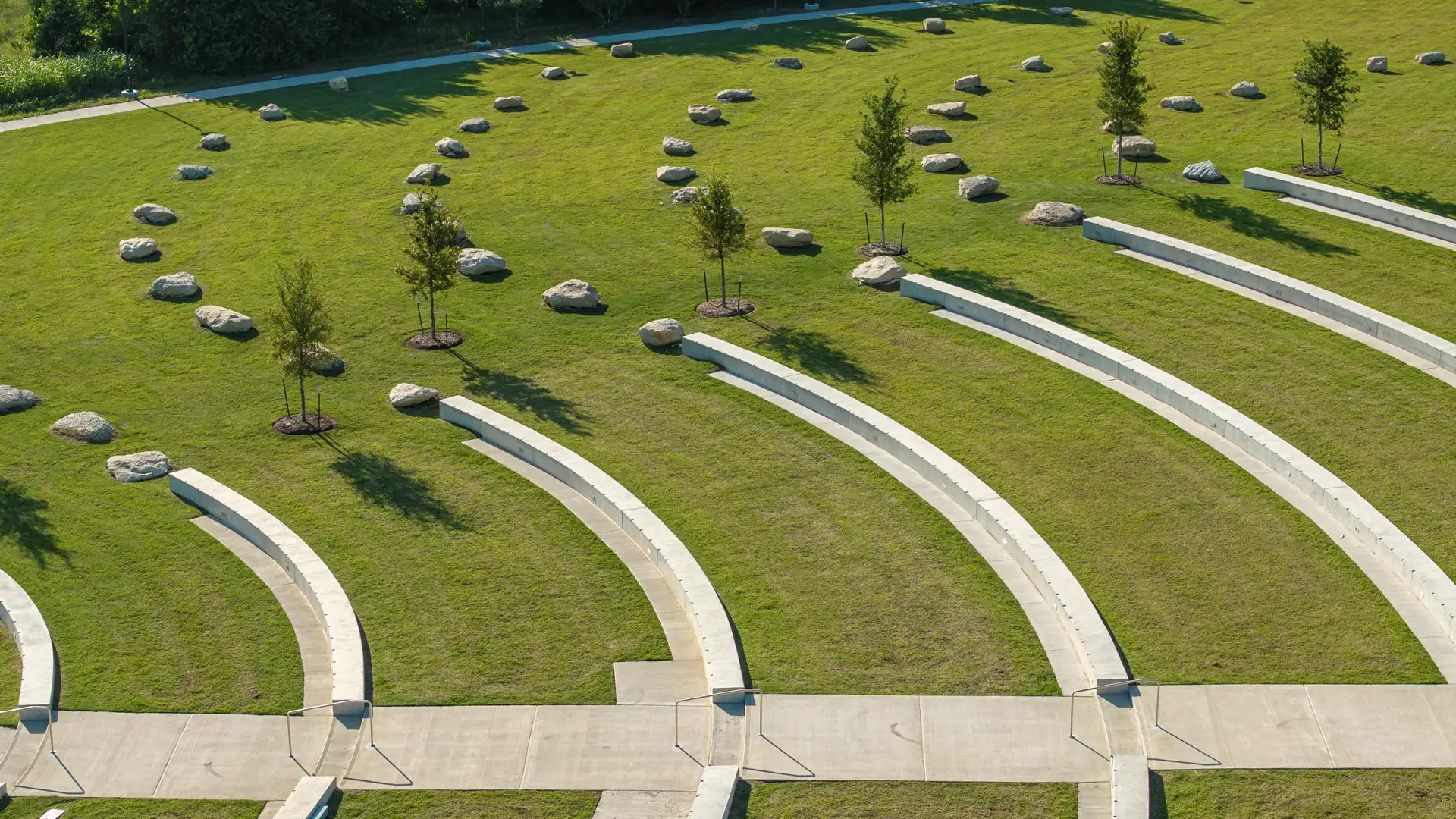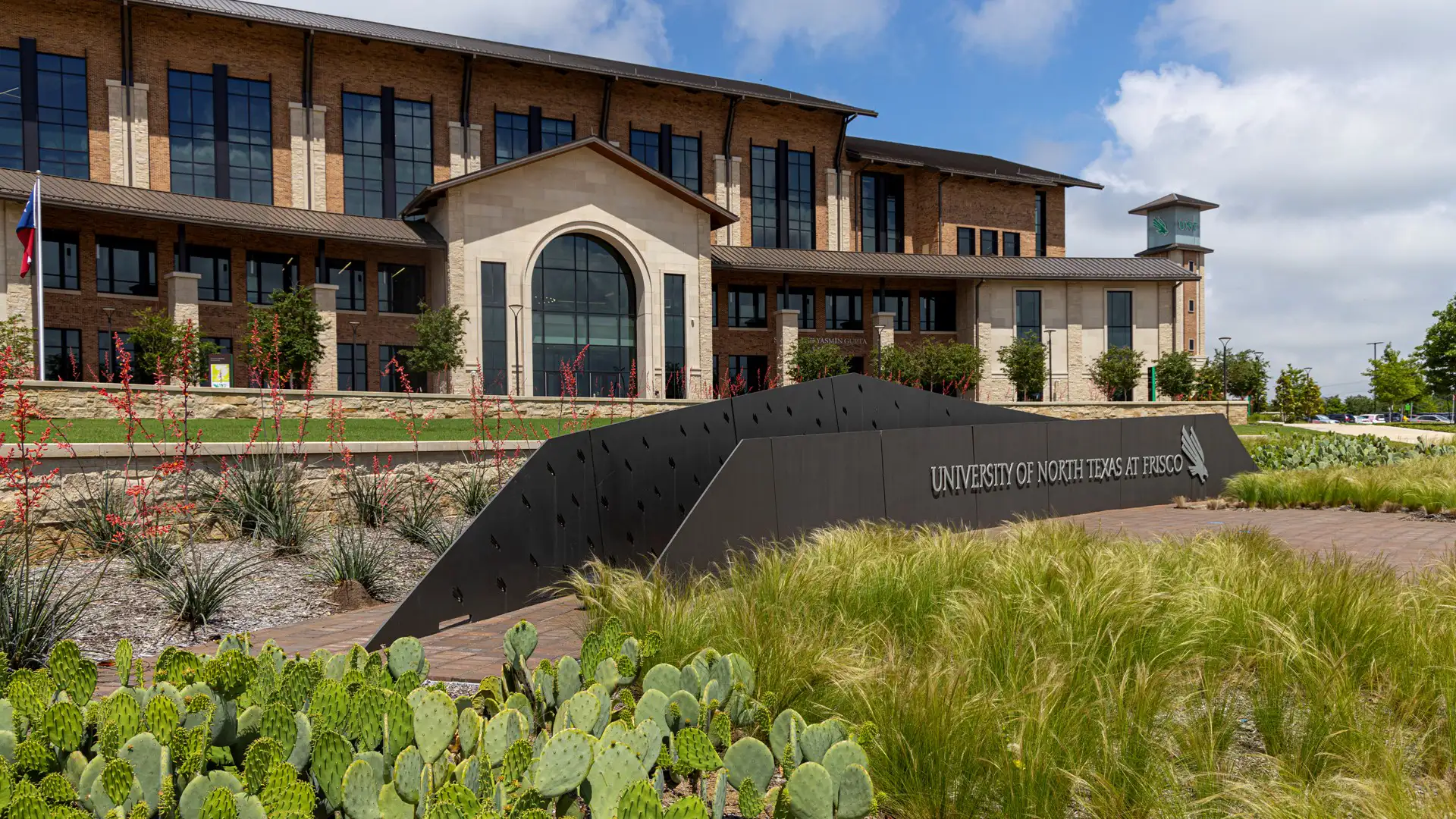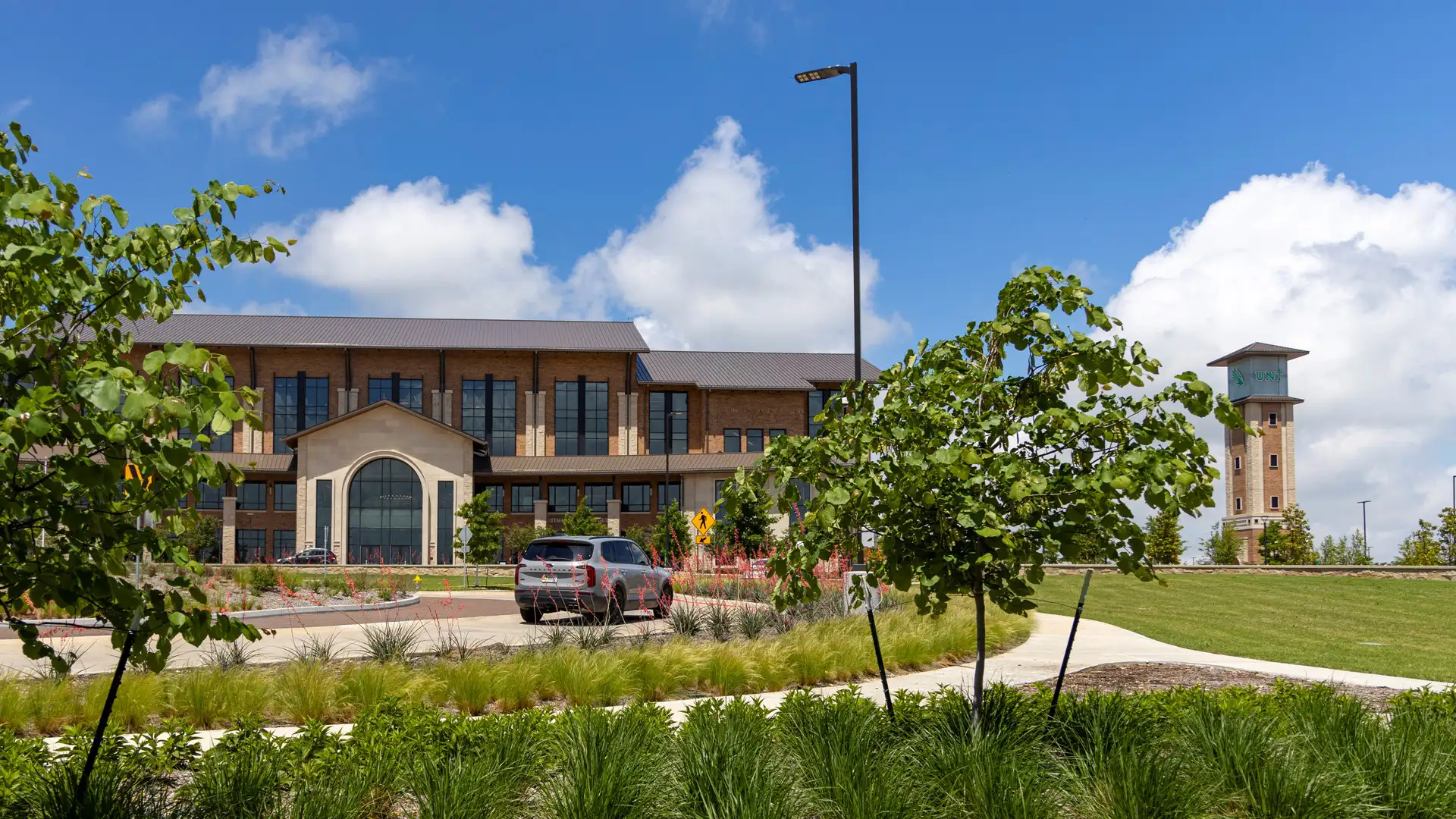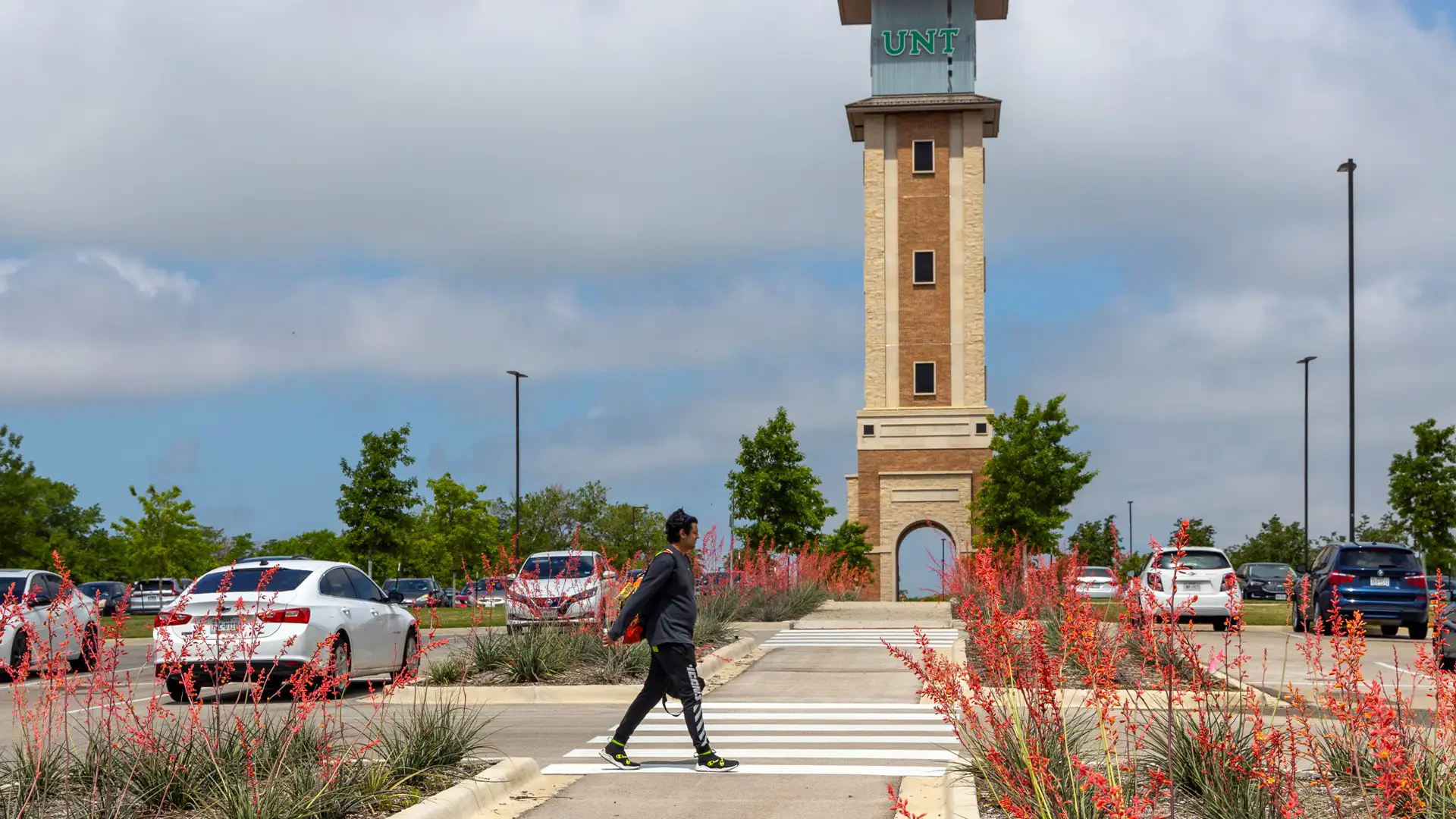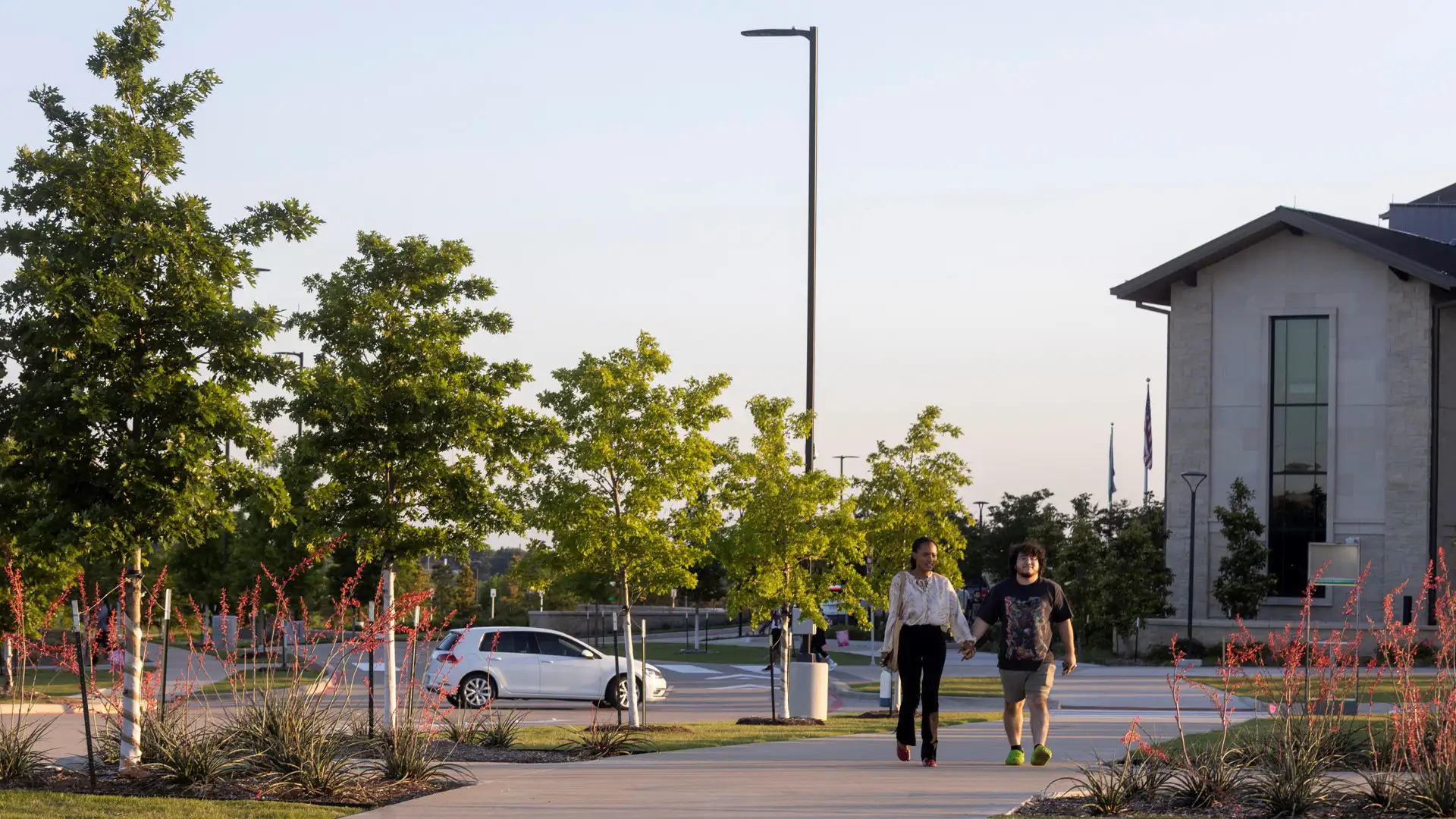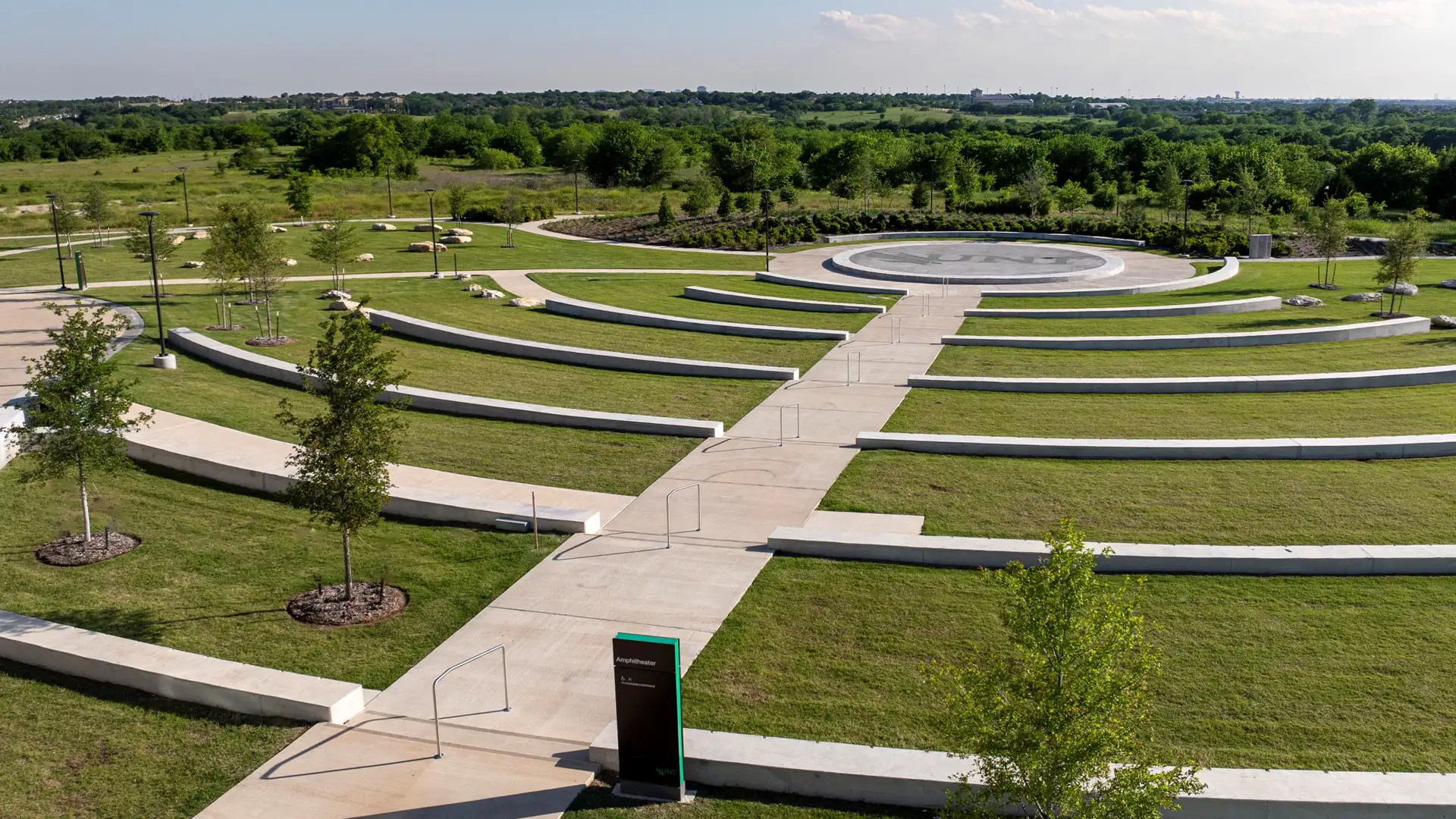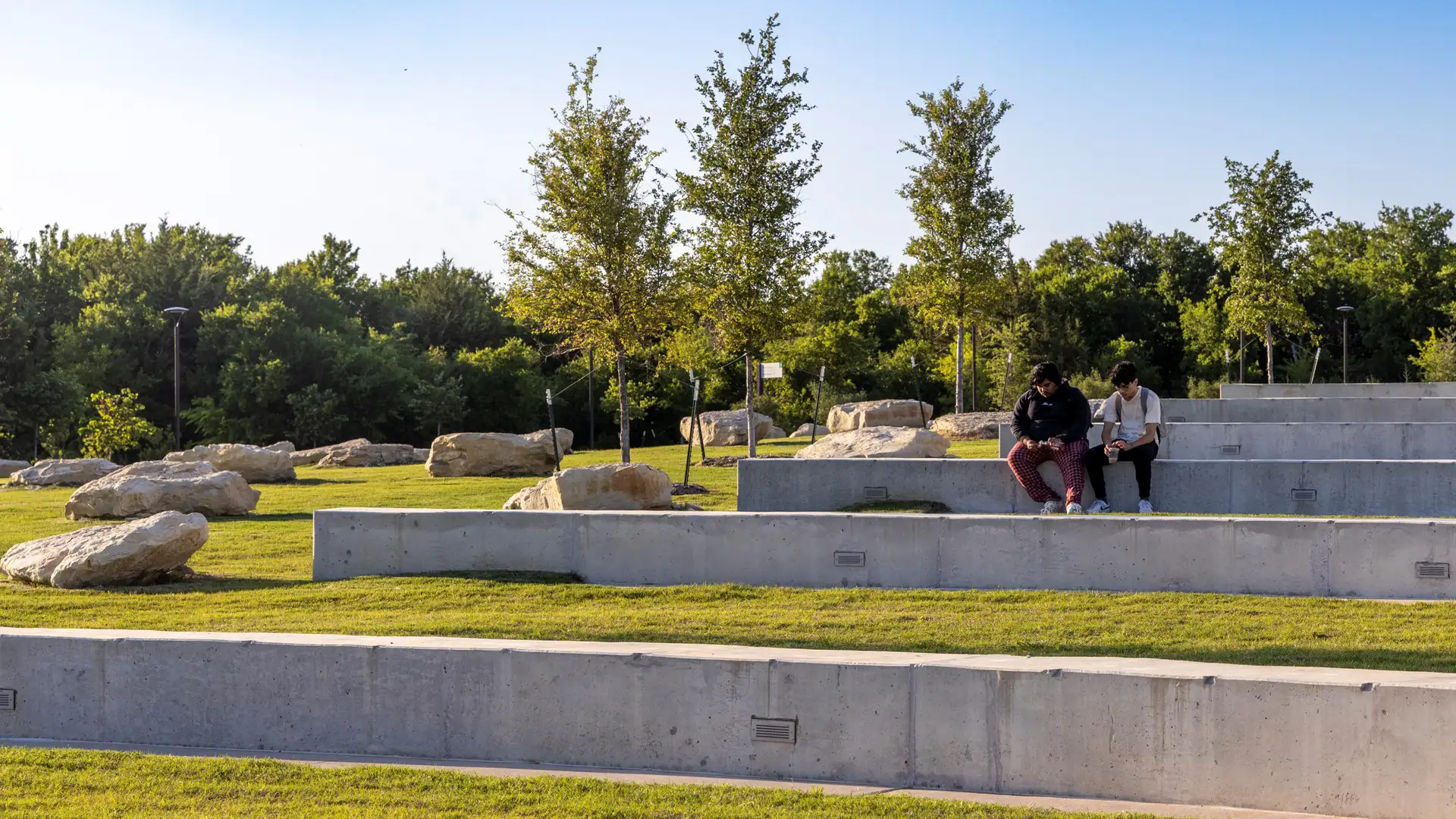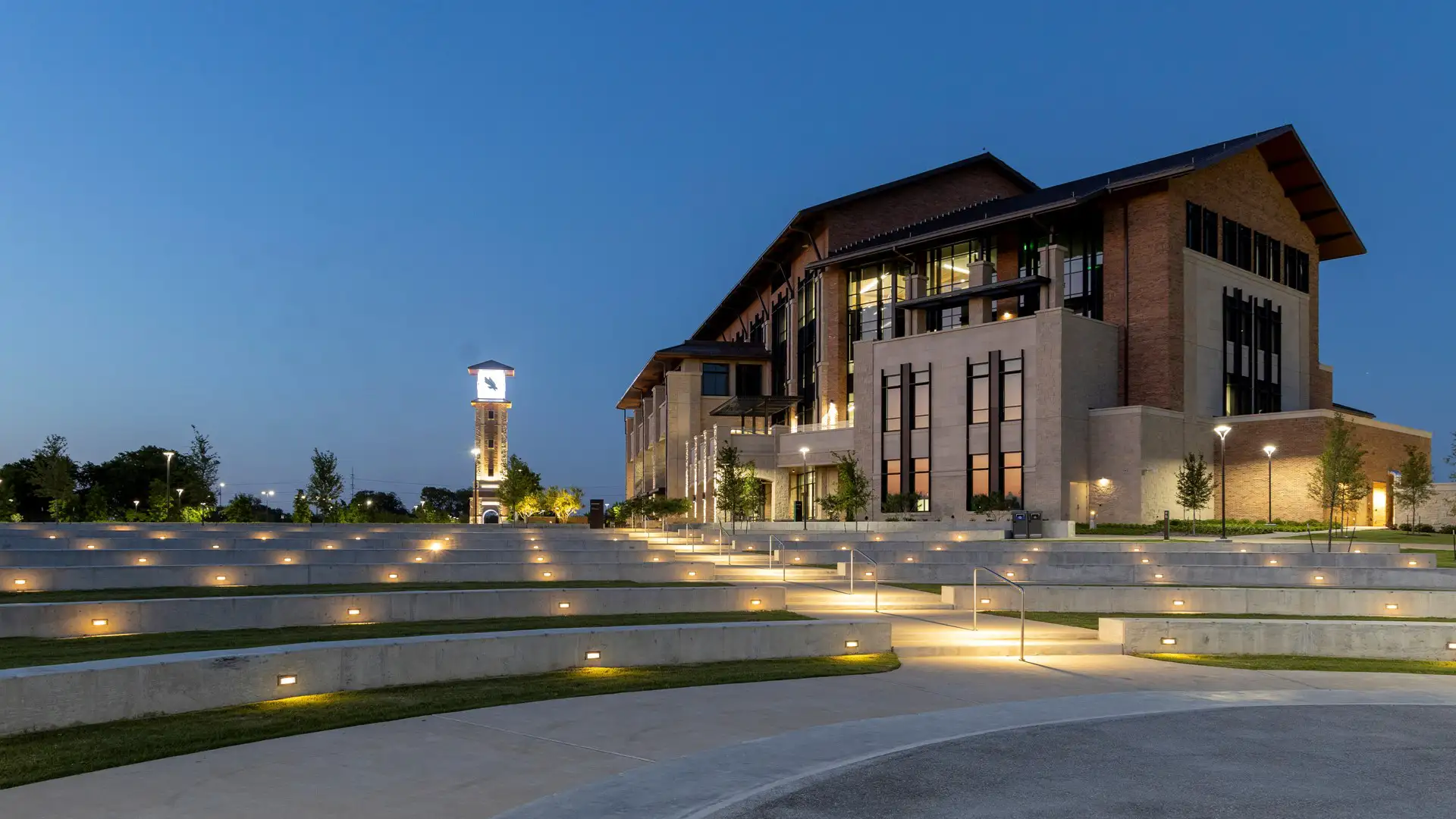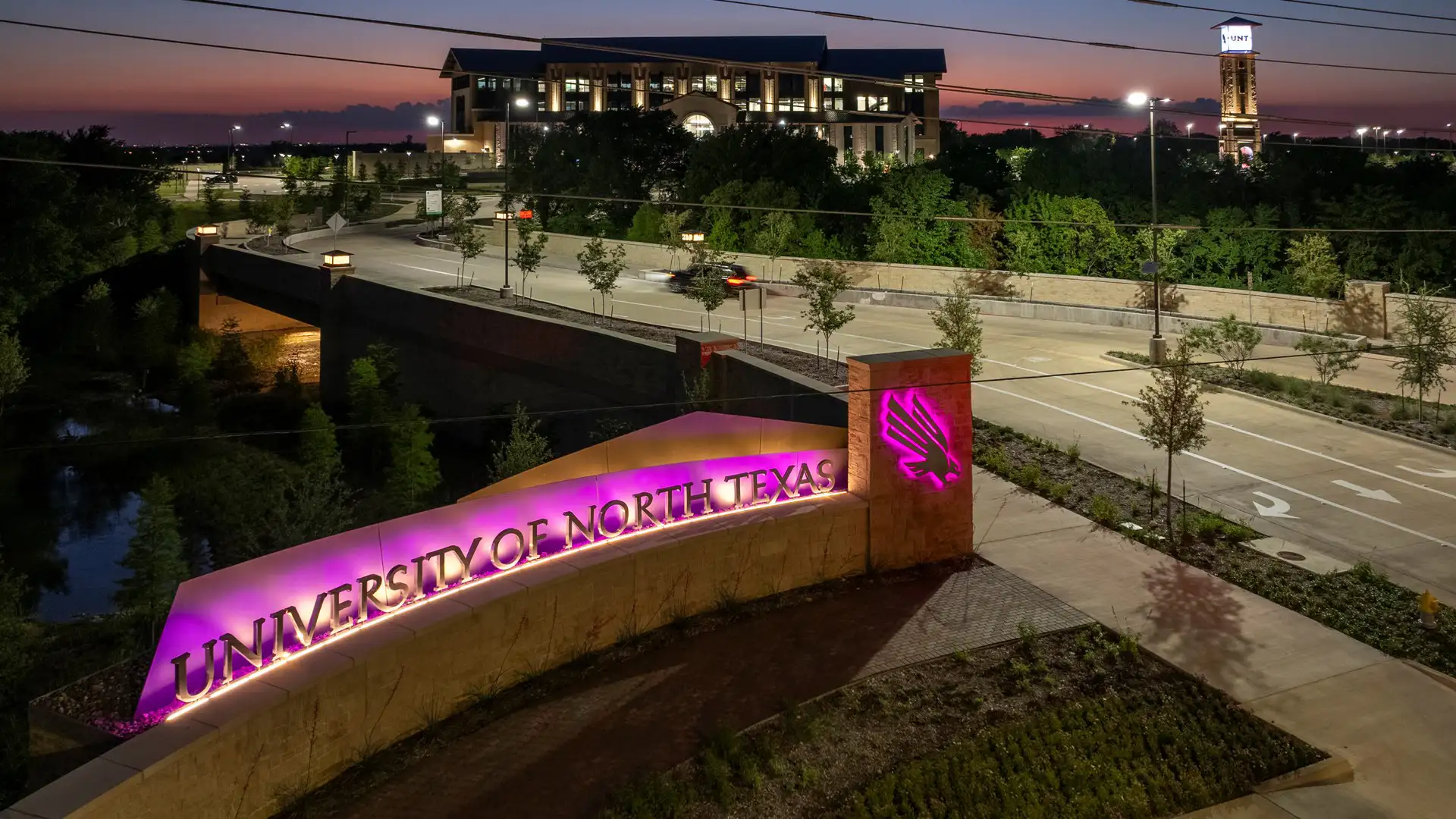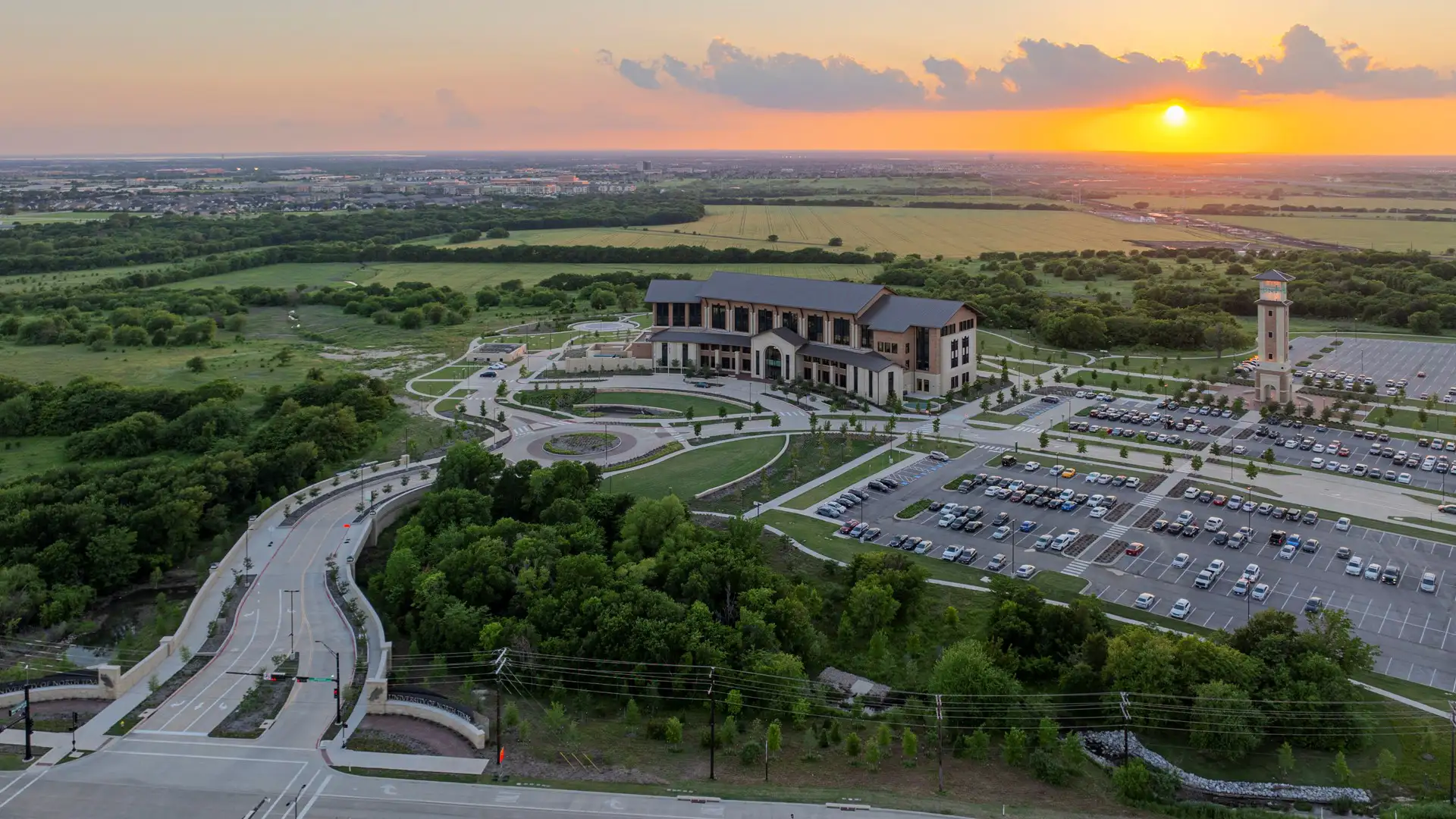The University of North Texas (UNT) envisioned a transformative greenfield campus in Frisco to support the region’s rapid growth and diverse economic needs. The site’s challenges, including topographical variation, stormwater management, and integration with natural and urban contexts, required a master plan that fostered innovation and sustainability while creating a vibrant sense of place.
The plan capitalized on the site’s natural ridge by introducing the Ridge Mall, a central spine that organizes campus zones, provides panoramic views, and establishes a clear spatial hierarchy. Detention and retention ponds manage runoff and enhance aesthetics, connecting directly to Panther Creek’s watershed and reinforcing ecological stewardship. A network of trails and pathways links campus zones and connects to Frisco’s future city park and the Fields HQ mixed-use development, fostering collaboration and accessibility.
The plan integrates native vegetation, existing water bodies, and topographical highlights to minimize environmental impact, while stormwater systems serve as both functional infrastructure and educational tools. A pedestrian-focused approach reduces vehicle reliance, creating a healthier, more connected environment. The Ridge Mall, Bell Tower, and amphitheaters establish a distinct identity, while the phased expansion plan ensures adaptability to future needs while maintaining architectural cohesion.
Stanford West Apartments
SWA placed a special emphasis on maintaining the riparian corridor with native planting, using consideration when dealing with the archaeologically sensitive areas of the site, as well as existing recreation trails and landscape amenities such as parks and play areas. The internal street grid and architectural and landscape elements are designed to recall the ...
Montclair State University Student Center and Quad
SWA/Balsley collaborated with DIG Architects and Montclair State University to reimagine the campus student center,...
Universidad de Monterrey Campus Master Plan
The project focuses on improving the sustainability of the 247-acre campus, designing a shift from a vehicular orientation to one that encourages pedestrian, bicycle, and transit use. Site design strategies employ indigenous plant materials and natural water retention and filtration for low-maintenance landscaping. Phase 1 includes site design for one of Latin...
Stanford Hoover Institution Traitel Building
The Hoover Institution at Stanford University is a public policy research organization promoting principles of individual, economic, and political freedom. CAW and SWA collaborated as a design team to create a building and site that helped promote research collaboration through open site connections and workspace.
SWA focused on a site design that exten...


